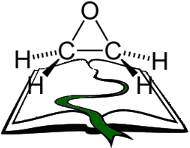Challenges
The project wants to find a solution to exterminate mould with a substance and method harmless for men and books. This is beneficial for all European users of archival material.
Mould destroys our cultural heritage. Especially books and charters in archives, being unique by nature and thus extremely valuable for our understanding of Europe´s past are very much at risk to be lost due to microorganisms. Mouldy material is a serious health hazard for men, both archivists and readers, as most of the spores cause dangerous illnesses.
Today still many charters and books are disinfected with toxic measures such as ethylene oxide fumigation – although known to be a toxic biocide, still being used for mould extinguishing in several European countries. The fumigated material is then again handed out to a vast number of innocent readers and users of public libraries, archives and other institutions preserving cultural heritage. It has to be assumed that all over Europe written heritage on paper, leather, parchment etc. is contaminated with ethylene oxide!
The questions to be verified in the course of the project concerning material and risks to men are:
- What species were/are present in the material in question?
- Is mould permanently extinguished by ethylene oxide treatment or still active and thus a potential danger for the reader?
- If the mould is dead, will it nevertheless represent a potential danger as some dead fungi are also poisonous for men?
- Is the ethylene oxide still in the material or not?
- Is there potential risk for the reader coming from the fumigant?
Object of the scientific research and evaluation – exemplary archival collection:

The Archives of the Protestant Parish of the Holy Trinity in Świdnica (PL) houses ca. 12.000 individual items, i.e. manuscripts, prints, bound books and loose archival material. These sources for the history of Protestantism are complete from their beginning in 1652 until today and highly valuable. They were chosen as a representative material for the research within the project.
The archive not only holds books and documents made of the typical material combination – the various writing materials, leathers, parchment and paper found in almost any historic collection in Europe – promising significant results useful for any other institution in Europe and around the world. In addition to that, the archive was also ethylene oxide fumigated and thus offers a good study material for our question. The parameters used for the fumigation are known, which is very valuable information for the interpretation and evaluation of the results.
At the same time the named collection within the Archive represents an invaluable source for research on Protestant history, art historical questions, political interactions in the region etc. performed by professors and students of the universities in Prague (CZ) and Wroclaw (PL) within the course of the project.






